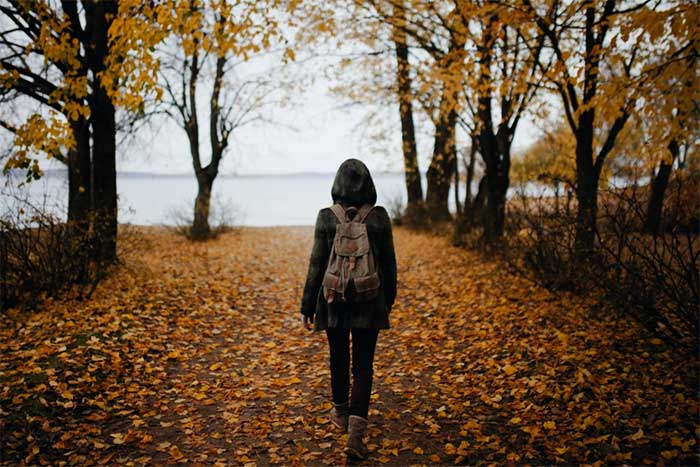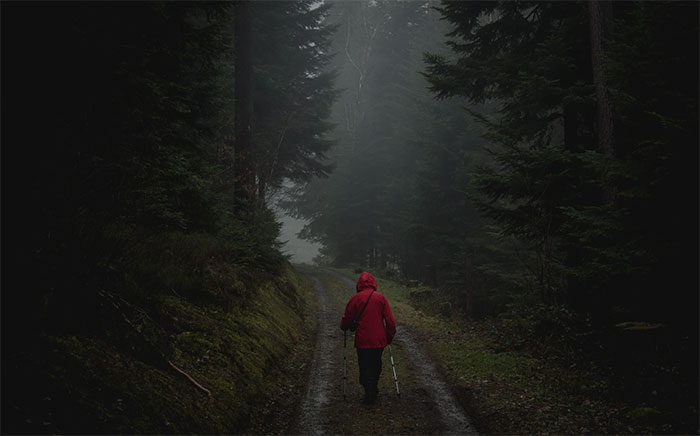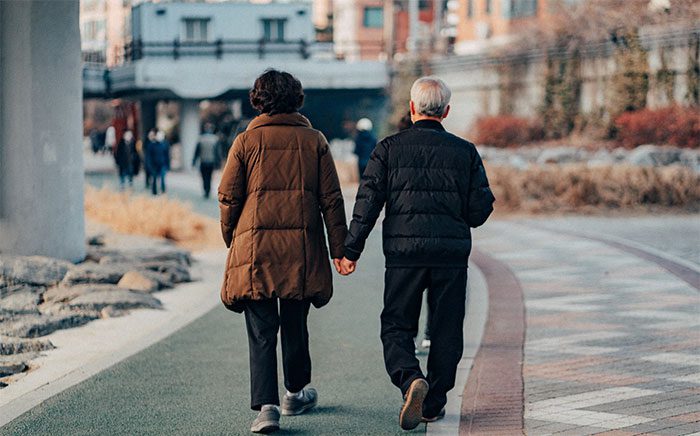According to The Guardian, unfavorable weather may deter people from walking outdoors, but in reality, it offers unexpected health benefits.
A 2021 study indicated that in rainy and windy conditions, bacteria and germs are easily dispersed or washed away. This means that walking in such weather can be easier due to fewer people and more beneficial because of the clean air.

Experiencing a walk in poor weather conditions can be uncomfortable but has significant benefits. (Image source: Unsplash).
Walking in the Cold Rain
Moreover, there are many other reasons to walk in the rain, especially during heavy downpours.
In the rain, trees and soil release many sweet-smelling compounds, and the interaction between water molecules and air creates a phenomenon known as air ionization. According to various studies, breathing this air can help improve mood, respiratory health, and immunity.
To prove this, Austrian scientists conducted a series of experiments in the Alps. The results showed that individuals walking in highly ionized air had higher levels of important antibodies in the mucous membranes of the mouth, nose, and intestines. Researchers speculate that these antibodies contribute to enhanced immunity and amplify the oxygen uptake capacity in the lungs of participants.
“In misty forests, the amount of negative ions in the air is double that of open land,” says Annabel Streets, author of three books on walking, encouraging many to rise early and make the most of the autumn mist.

Walking in the forest during heavy rain has unexpected health benefits. (Image source: Unsplash).
Additionally, another reason to walk in cold weather is to activate brown fat, which helps dissolve white fat that causes arterial blockages. Studies have found that construction workers in Northern Europe and barefoot walkers in winter have significantly more brown fat.
According to author Streets, brown fat is the most effective fat-burning substance, typically activated in cold air. Furthermore, exercise and caffeine also stimulate the body to produce brown fat.
Another factor that makes cold rainy weather deter people from walking is the quick onset of darkness. However, science has shown that walking after dinner not only helps control blood sugar levels and aids digestion but also makes it easier to sleep.
According to Dr. Kate McLean, an expert in urban scents and odors, walking in damp evenings can also stimulate the brain, as the body, especially the sense of smell, becomes more sensitive in such weather conditions.
Walking in the Mud
Moreover, she encourages people to choose muddy forests for walking, as mud is beneficial for health. Mud, whether in gardens or forest floors, is rich in bacteria that help improve mood.
According to findings from Australian scientists, mice that have more exposure to soil have a more diverse microbiome. Additionally, a study from Finland compared children playing in plastic and concrete playgrounds with those whose playgrounds were near forest edges. The results showed that the second group had a richer microbiome on their skin and in their intestines.
More importantly, researchers also found “many parallel changes in the immune systems of children.” Children who played in the mud had better immunity and experienced fewer coughs and colds over several months.
Walking Backwards
“Not many people are out in cold rainy weather,” expert Streets notes that this is an ideal condition for people to practice walking backwards—one of the latest health trends from Japan.
A study published in the journal Brain Communications in 2020 found that walking backwards has a completely different impact on the body’s muscles.

Walking backwards is one of the latest health trends from Japan. (Image source: Unsplash).
Additionally, walking backwards also improves body balance. Typically, people tend to lean slightly forward when walking. When walking backwards, the spine is aligned straight, and the muscles must work to keep the entire body stable.
Another study showed that walking backwards four times a week for 10 minutes each time helped reduce lower back pain within just three weeks. At the same time, this style of walking reduces knee and quadriceps pain and improves gait.
Author Streets suggests that readers choose wide, flat, and open areas to practice walking backwards.


















































